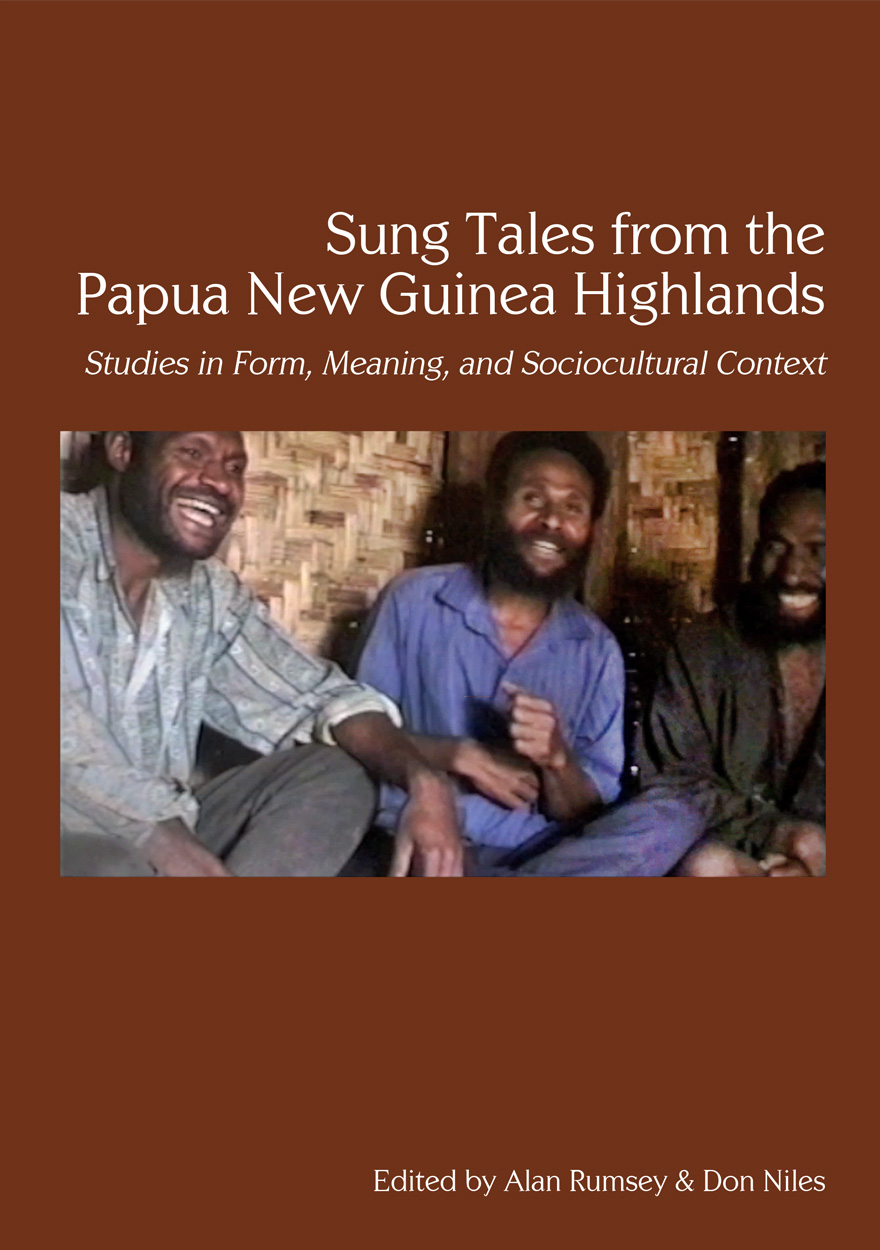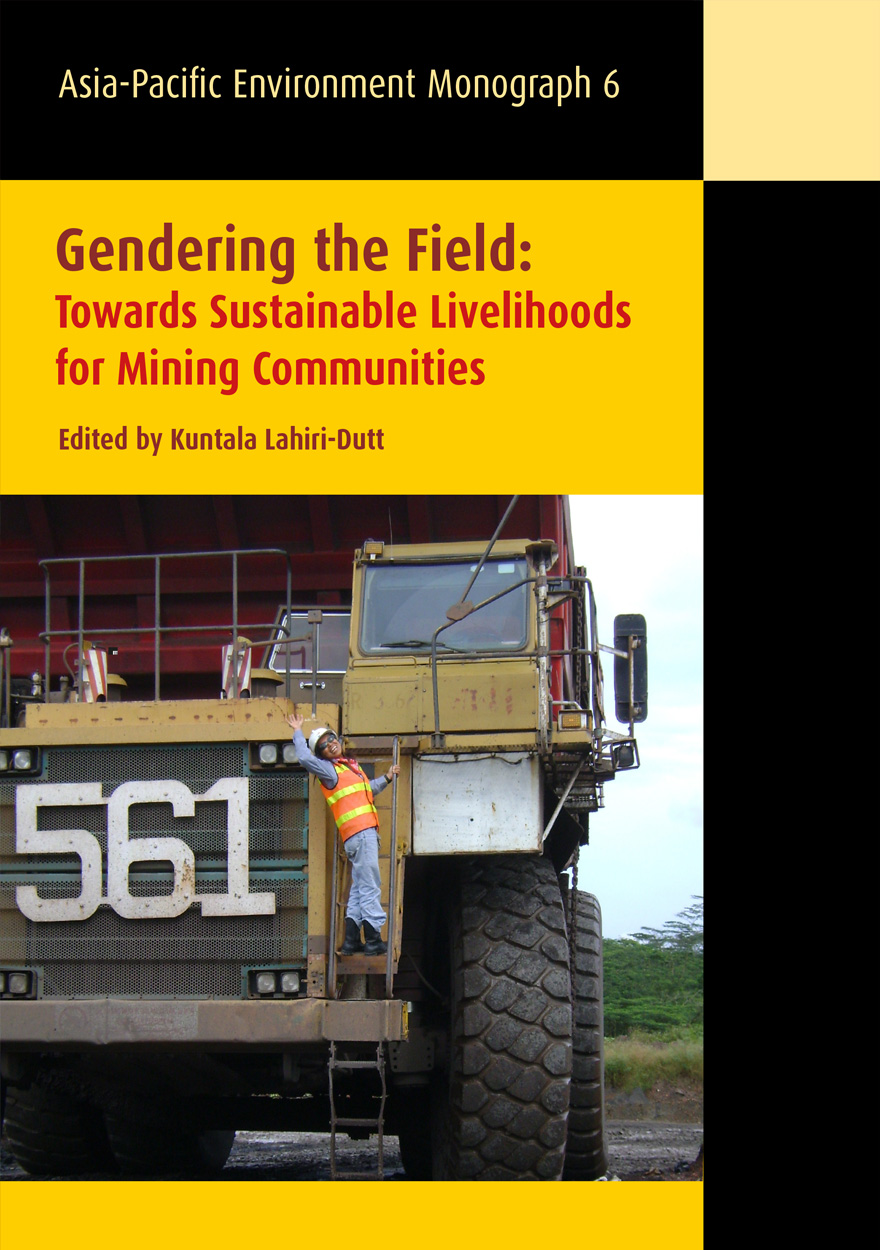Search titles
Displaying results 51 to 60 of 87.

Dilemmas of Development »
The social and economic impact of the Porgera gold mine
Edited by: Colin Filer
Publication date: December 2012
The Porgera gold mine in the Highlands of Papua New Guinea is technically one of the most sophisticated and successful mines of recent times. In its second year of operations (1992) it was the third largest gold producing mine in the world. Socially, though, the mine has brought a range of massive changes for the local Ipili community-both positive and negative.
Dilemmas of Development is a record of a series of studies of the social and economic effects of the Porgerta mine, commissioned by the Porgera Joint Vemture (PJV).

Indigenous Peoples' Innovation »
Intellectual Property Pathways to Development
Edited by: Peter Drahos, Susy Frankel
Publication date: August 2012
Traditional knowledge systems are also innovation systems. This book analyses the relationship between intellectual property and indigenous innovation. The contributors come from different disciplinary backgrounds including law, ethnobotany and science. Drawing on examples from Australia, New Zealand and the Pacific Islands, each of the contributors explores the possibilities and limits of intellectual property when it comes to supporting innovation by indigenous people.

Engendering Violence in Papua New Guinea »
Edited by: Margaret Jolly, Christine Stewart, Carolyn Brewer
Publication date: July 2012
This collection builds on previous works on gender violence in the Pacific, but goes beyond some previous approaches to ‘domestic violence’ or ‘violence against women’ in analysing the dynamic processes of ‘engendering’ violence in PNG. ‘Engendering’ refers not just to the sex of individual actors, but to gender as a crucial relation in collective life and the massive social transformations ongoing in PNG: conversion to Christianity, the development of extractive industries, the implanting of introduced models of justice and the law and the spread of HIV. Hence the collection examines issues of ‘troubled masculinities’ as much as ‘battered women’ and tries to move beyond the black and white binaries of blaming either tradition or modernity as the primary cause of gender violence. It relates original scholarly research in the villages and towns of PNG to questions of policy and practice and reveals the complexities and contestations in the local translation of concepts of human rights. It will interest undergraduate and graduate students in gender studies and Pacific studies and those working on the policy and practice of combating gender violence in PNG and elsewhere.

A Trial Separation »
Australia and the Decolonisation of Papua New Guinea
Authored by: Donald Denoon
Publication date: May 2012
When it came in September 1975, Papua New Guinea’s independence was marked by both anxiety and elation. In the euphoric aftermath, decolonisation was declared a triumph and immediate events seemed to justify that confidence. By the 1990s, however, events had taken a turn for the worse and there were doubts about the capacity of the State to function. Before independence, Papua New Guinea was an Australian Territory. Responsibility lay with a minister in Canberra and services were provided by Commonwealth agencies. In 1973, Prime Minister Gough Whitlam declared that independence should be achieved within two years. While Australians were united in their desire to decolonise, many Papua New Guineans were nervous of independence.
This superlative history presents the full story of the ‘trial separation’ of Australia and Papua New Guinea, concluding that — given the intertwined history, geography and economies of the two neighbours — the decolonisation project of ‘independence’ is still a work in progress.

East Asia Forum Quarterly: Volume 4, Number 2, 2012 »
Publication date: May 2012
East Asia Forum Quarterly grew out of East Asia Forum (EAF) online, which has developed a reputation for providing a platform for the best in Asian analysis, research and policy comment on the Asia Pacific region in world affairs. EAFQ aims to provide a further window onto research in the leading research institutes in Asia and to provide expert comment on current developments within the region. The East Asia Forum Quarterly, like East Asia Forum online, is an initiative of the East Asia Forum (EAF) and its host organisation, the East Asian Bureau of Economic Research (EABER) in the Crawford School of Economics and Government in the College of Asia & the Pacific at The Australian National University.
Download for free
Not available for purchase

Peopled Landscapes »
Archaeological and Biogeographic Approaches to Landscapes
Edited by: Simon G. Haberle, Bruno David
Publication date: January 2012
This impressive collection celebrates the work of Peter Kershaw, a key figure in the field of Australian palaeoenvironmental reconstruction. Over almost half a century his research helped reconceptualize ecology in Australia, creating a detailed understanding of environmental change in the Late Pleistocene and Holocene. Within a biogeographic framework one of his exceptional contributions was to explore the ways that Aboriginal people may have modified the landscape through the effects of anthropogenic burning. These ideas have had significant impacts on thinking within the fields of geomorphology, biogeography, archaeology, anthropology and history. Papers presented here continue to explore the dynamism of landscape change in Australia and the contribution of humans to those transformations. The volume is structured in two sections. The first examines evidence for human engagement with landscape, focusing on Australia and Papua New Guinea but also dealing with the human/environmental histories of Europe and Asia. The second section contains papers that examine palaeoecology and present some of the latest research into environmental change in Australia and New Zealand. Individually these papers, written by many of Australia’s prominent researchers in these fields, are significant contributions to our knowledge of Quaternary landscapes and human land use. But Peopled Landscapes also signifies the disciplinary entanglement that is archaeological and biogeographic research in this region, with archaeologists and environmental scientists contributing to both studies of human land use and palaeoecology. Peopled Landscapes reveals the interdisciplinary richness of Quaternary research in the Australasian region as well as the complexity and richness of the entangled environmental and human pasts of these lands.
— Prof. Peter Hiscock, The Australian National University

Echoes of the Tambaran »
Masculinity, history and the subject in the work of Donald F. Tuzin
Edited by: David Lipset, Paul Roscoe
Publication date: October 2011
In the Sepik Basin of Papua New Guinea, ritual culture was dominated by the Tambaran —a male tutelary spirit that acted as a social and intellectual guardian or patron to those under its aegis as they made their way through life. To Melanesian scholarship, the cultural and psychological anthropologist, Donald F. Tuzin, was something of a Tambaran, a figure whose brilliant and fine-grained ethnographic project in the Arapesh village of Ilahita was immensely influential within and beyond New Guinea anthropology. Tuzin died in 2007, at the age of 61. In his memory, the editors of this collection commissioned a set of original and thought provoking essays from eminent and accomplished anthropologists who knew and were influenced by his work. They are echoes of the Tambaran.
The anthology begins with a biographical sketch of Tuzin’s life and scholarship. It is divided into four sections, each of which focuses loosely around one of his preoccupations. The first concerns warfare history, the male cult and changing masculinity, all in Melanesia. The second addresses the relationship between actor and structure. Here, the ethnographic focus momentarily shifts to the Caribbean before turning back to Papua New Guinea in essays that examine uncanny phenomena, narratives about childhood and messianic promises. The third part goes on to offer comparative and psychoanalytic perspectives on the subject in Fiji, Bali, the Amazon as well as Melanesia. Appropriately, the last section concludes with essays on Tuzin’s fieldwork style and his distinctive authorial voice.

Sung Tales from the Papua New Guinea Highlands »
Studies in Form, Meaning, and Sociocultural Context
Edited by: Alan Rumsey, Don Niles
Publication date: August 2011
The genres of sung tales that are the subject of this volume are one of the most striking aspects of the cultural scene in the Papua New Guinea Highlands. Composed and performed by specialist bards, they are a highly valued art form. From a comparative viewpoint they are remarkable both for their scale and complexity, and for the range of variation that is found among regional genres and individual styles. Though their existence has previously been noted by researchers working in the Highlands, and some recordings made of them, most of these genres have not been studied in detail until quite recently, mainly because of the challenging range of disciplinary expertise that is required—in anthropology, linguistics, and ethnomusicology.
This volume presents a set of interrelated studies by researchers in all of those fields, and by a Papua New Guinea Highlander who has assisted with the research based on his lifelong familiarity with one of the regional genres. The studies presented here (all of them previously unpublished and written especially for this volume) are of groundbreaking significance not only for specialists in Melanesia or the Pacific, but also for readers with a more general interest in comparative poetics, mythology, musicology, or verbal art.

Gendering the Field »
Towards Sustainable Livelihoods for Mining Communities
Edited by: Kuntala Lahiri-Dutt
Publication date: March 2011
The chapters in this book offer concrete examples from all over the world to show how community livelihoods in mineral-rich tracts can be more sustainable by fully integrating gender concerns into all aspects of the relationship between mining practices and mine affected communities. By looking at the mining industry and the mine-affected communities through a gender lens, the authors indicate a variety of practical strategies to mitigate the impacts of mining on women’s livelihoods without undermining women’s voice and status within the mine-affected communities.
The term ‘field’ in the title of this volume is not restricted to the open-cut pits of large scale mining operations which are male-dominated workplaces, or with mining as a masculine, capital-intensive industry, but also connotes the wider range of mineral extractive practices which are carried out informally by women and men of artisanal communities at much smaller geographical scales throughout the mineral-rich tracts of poorer countries.

Civic Insecurity »
Law, Order and HIV in Papua New Guinea
Edited by: Vicki Luker, Sinclair Dinnen
Publication date: December 2010
Papua New Guinea has a complex ‘law and order’ problem and an entrenched epidemic of HIV. This book explores their interaction. It also probes their joint challenges and opportunities—most fundamentally for civic security, a condition that could offer some immunity to both.
This book is a valuable and timely contribution to a limited but growing body of scholarship in the social and structural contexts of HIV epidemiology in Papua New Guinea. The volume offers a unique collection of interdisciplinary insights on the connections between law and order and the HIV epidemic and is presented in a manner accessible to a wide audience, scholars and lay people alike… Significantly, this is the first volume to critically examine the complex and inexorable links between HIV, gender, violence, and security within a theoretical framework that illuminates the challenges of the epidemic for PNG’s future cohesion and stability as a young nation…The importance of this courageous book cannot be overstated. While it communicates an urgent and potent message about the need for immediate action … it offers insightful reflections on the processes and possibilities of social transformation that undoubtedly will have enduring scholarly and practical value.
— Dr Katherine Lepani, Social Foundations of Medicine, The Australian National University.



